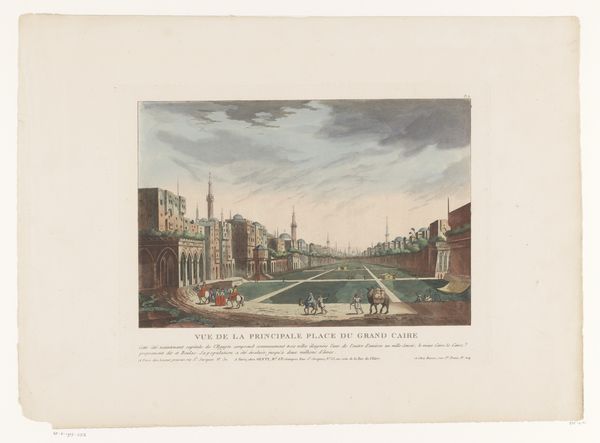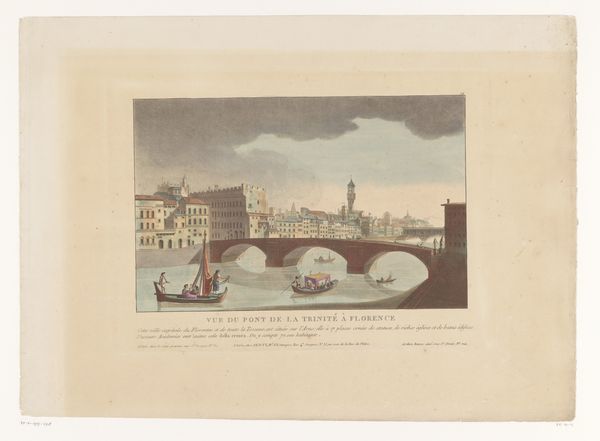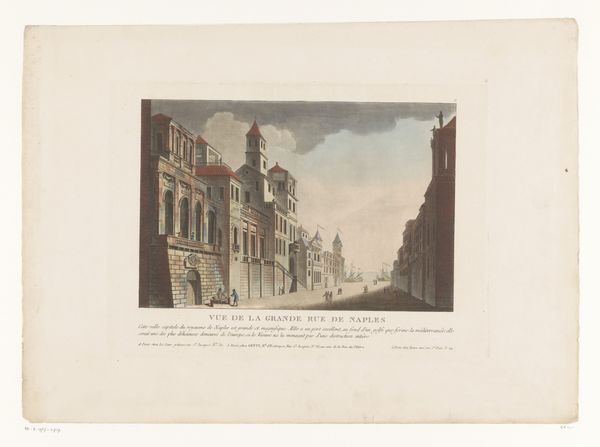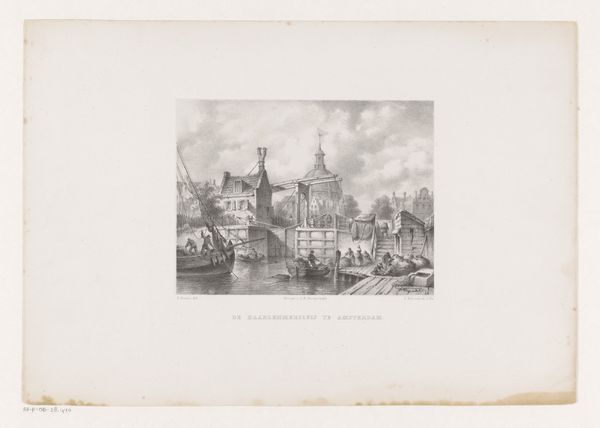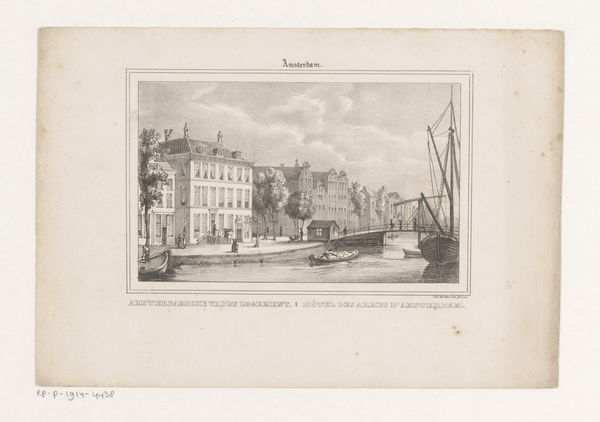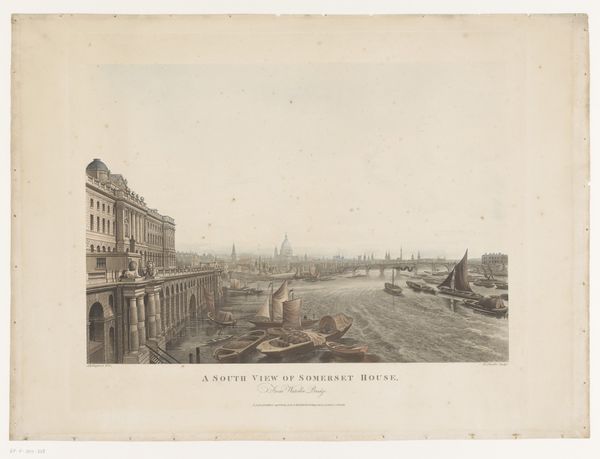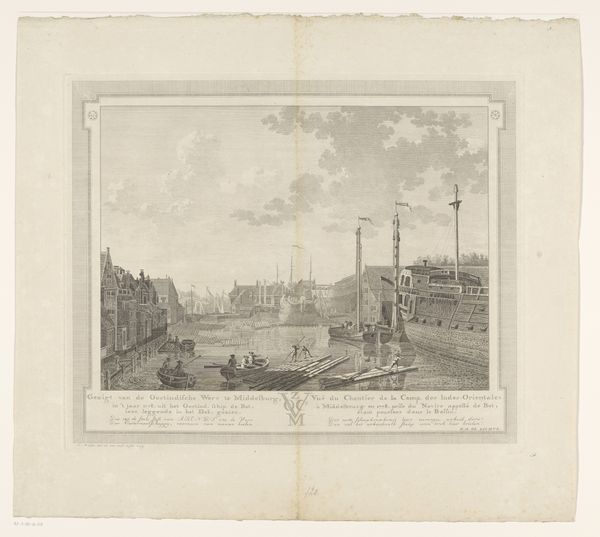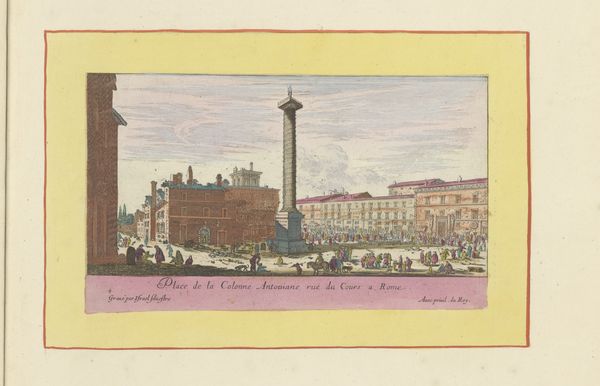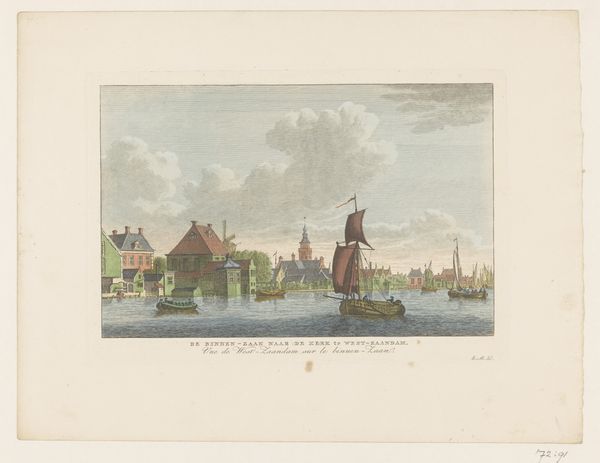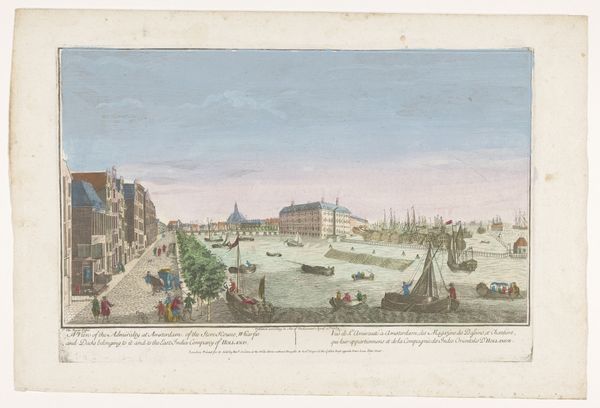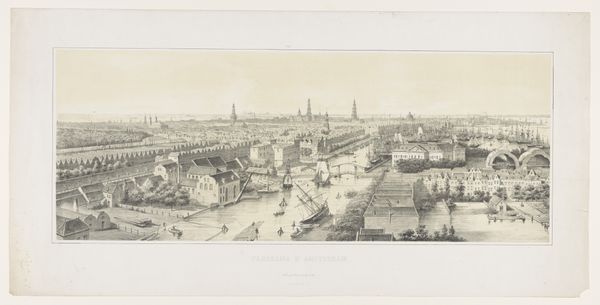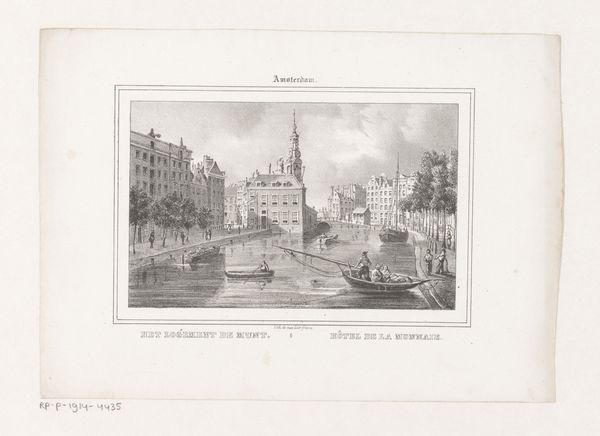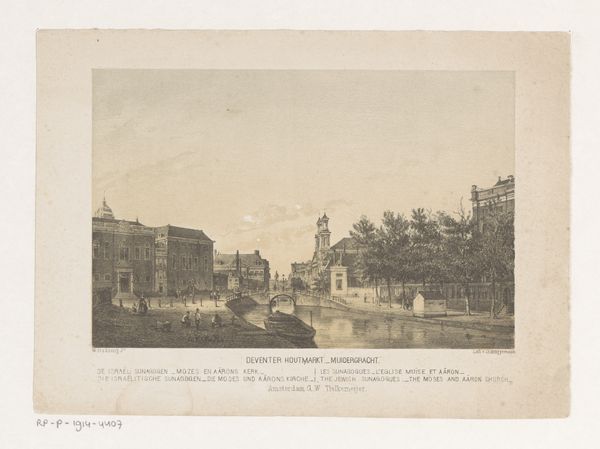
painting, print, watercolor
#
neoclacissism
#
painting
# print
#
landscape
#
perspective
#
watercolor
#
romanticism
#
cityscape
#
watercolour illustration
#
history-painting
Dimensions: height 290 mm, width 385 mm
Copyright: Rijks Museum: Open Domain
Curator: Let's consider "Gezicht op het Piazza Navona te Rome," created by Louis Lecoeur between 1812 and 1814, now held at the Rijksmuseum. Editor: A surprisingly subdued watercolor. There’s a certain stillness, almost a melancholy, despite the grand subject matter. The sky seems heavy. Curator: Observe how the artist deploys linear perspective, the buildings receding precisely towards the horizon. Note also the compositional balance—the architectural mass on the left mirroring the open space on the right, anchored by the obelisk in the center. Editor: The obelisk stands as a powerful symbol, certainly. Lecoeur is embedding this classical form into the contemporary space, acting as a reminder of Rome's history as well as a silent observer of contemporary life. What do you make of the relatively few figures in the piazza? Curator: Their presence, while diminutive, is crucial. They establish scale, emphasizing the monumentality of the architecture. Moreover, consider the subtle tonal variations, modulating light and shadow to create depth and volume. There’s a clear interest in architectural accuracy, typical of Neoclassical tendencies. Editor: I see hints of Romanticism, actually, beyond Neoclassicism, with this emphasis on atmosphere, this feeling of solitary grandeur in the urban scene. The watercolor technique is not photorealist. See the cloud-laden sky adding a layer of emotionality. It pulls the Piazza Navona into the sphere of human sentimentality, where history weighs on the soul. Curator: Perhaps. But, given Lecoeur’s training and the prevalence of Neoclassical ideals at the time, I'm inclined to see the work as primarily concerned with idealized representation. The figures conform, acting as part of the architecture rather than figures within a narrative. Editor: The artist’s formal precision doesn't negate its latent symbolic content, however controlled the visual approach might seem to be. We must give viewers room to reflect on these echoes of human presence! Curator: Fair enough. The play between control and the inchoate atmospheric qualities makes it a richer artwork. Editor: Indeed. I find this particular intersection compelling as well.
Comments
No comments
Be the first to comment and join the conversation on the ultimate creative platform.
